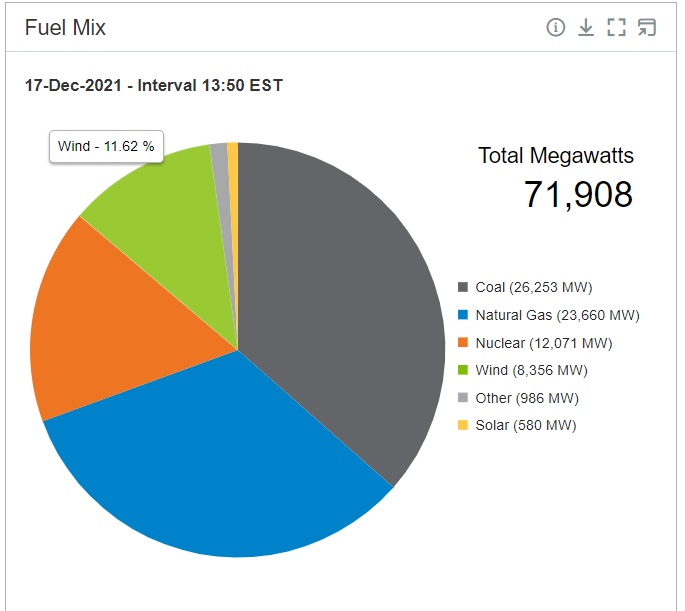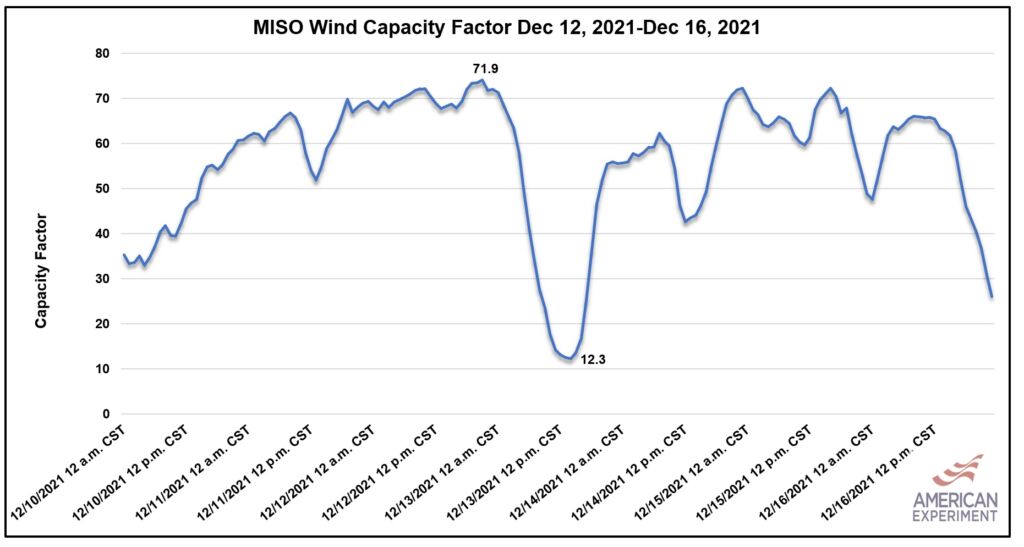How to calculate the productivity of wind on the regional grid
The Midcontinent Independent Systems Operator, MISO, is the regional electric grid that Minnesota belongs to. It consists of portions of 15 states and the Canadian province of Manitoba.
In late October 2021, MISO held an informational forum where it disclosed that the registered wind capacity of 28,888 megawatts MW of capacity, with 26,806 MW in service at the time of the forum. These numbers are interesting because they help us understand how the region’s wind turbines are performing compared to other energy sources.
MISO has real-time electricity displays on its website and its mobile app, which tell you how much electricity is being generated by each source and what percentage of the grid is currently being served by each source.
For example, as I write this article, wind is generating about 8,356 MW of electricity, which is 11.62 percent of the electricity demand on the MISO system.

The 11.62 percent figure is interesting, but it doesn’t really tell us much about how productive the wind is at this moment. For example, the relatively small contribution of wind to the grid could be the result of there being less capacity installed than other sources. This is where the 28,888 number comes in handy.
In order to figure out how productive the wind is being at any given time, take the amount of electricity currently being generated by wind turbines and divide it by the total installed capacity of wind on the MISO system and multiply it by 100 (8,356 MW/28,888MW x 100 = 28.9 percent). When we do this, we learn that wind is only producing about 30 percent of its potential output.
We can also use Energy Information Administration data to evaluate wind performance on an hourly basis over a series of time. The graph below shows wind productivity from December 10, 2021, through December 16, 2021.

As you can see, it was a pretty windy week, with the exception of the 12.3 percent output around noon on Dec. 14.
Hopefully, this guide will help you be able to explore the data for yourself if you are so inclined.